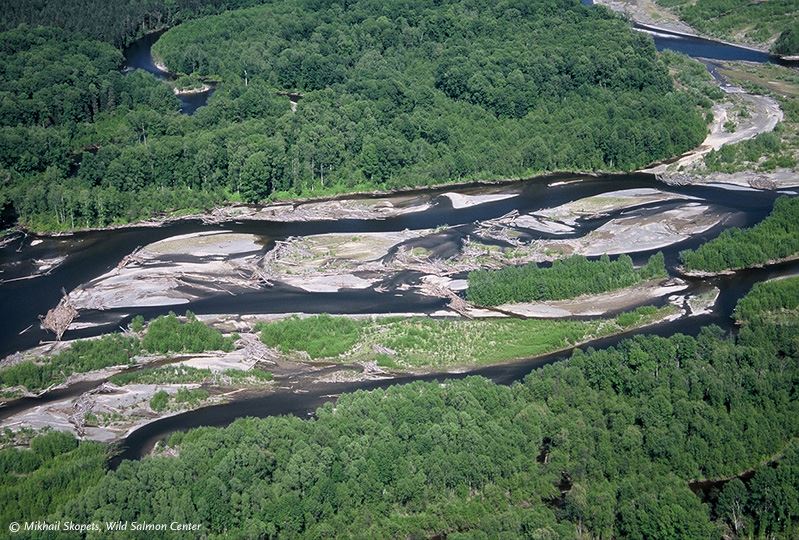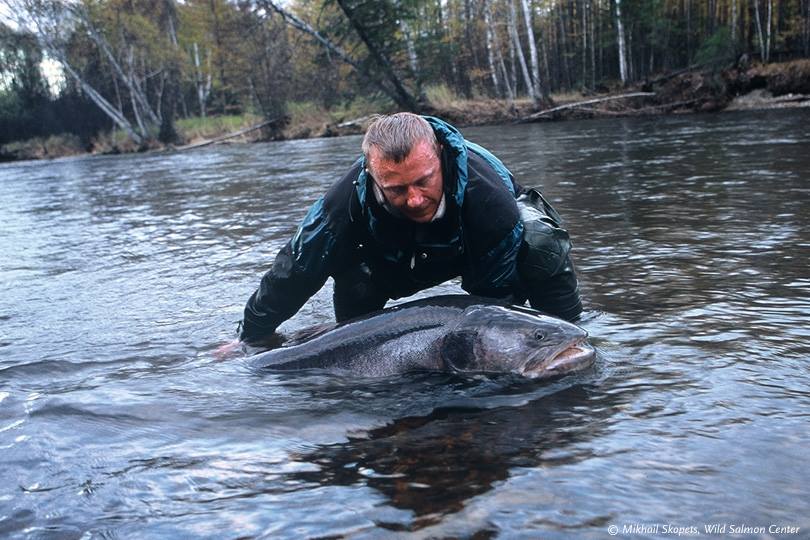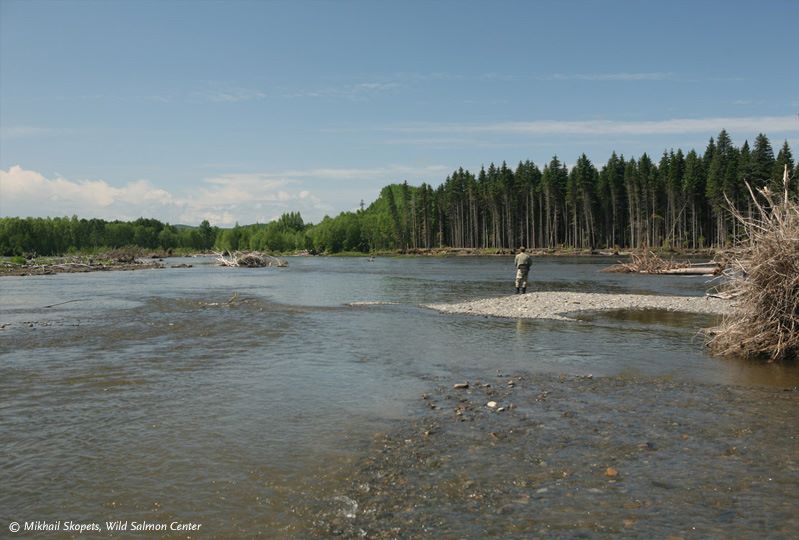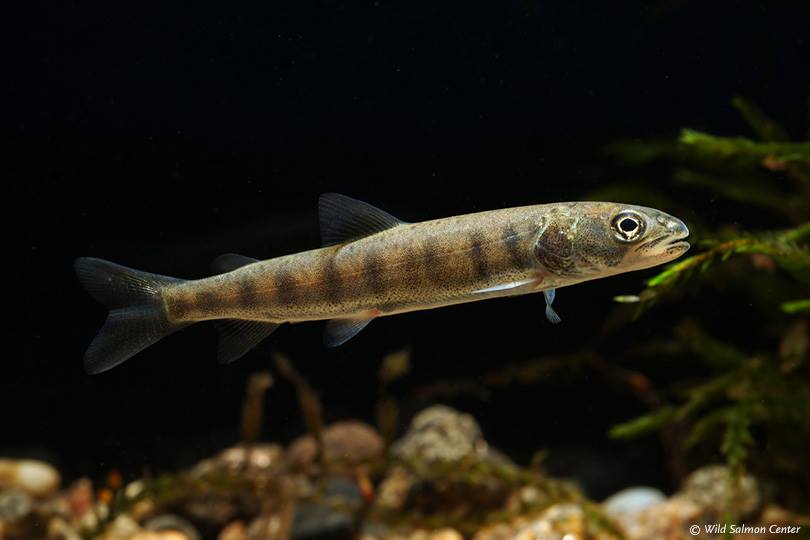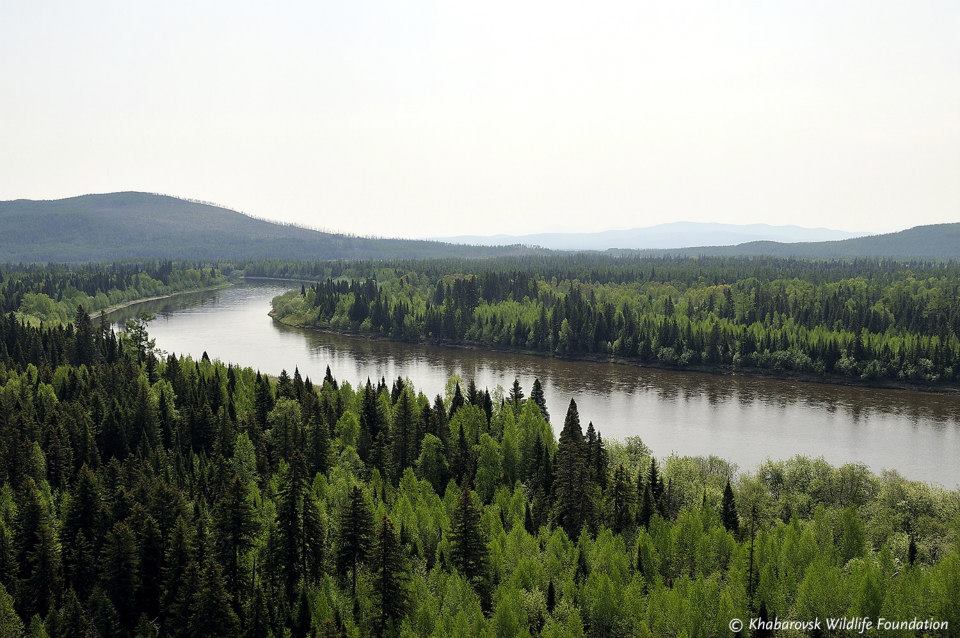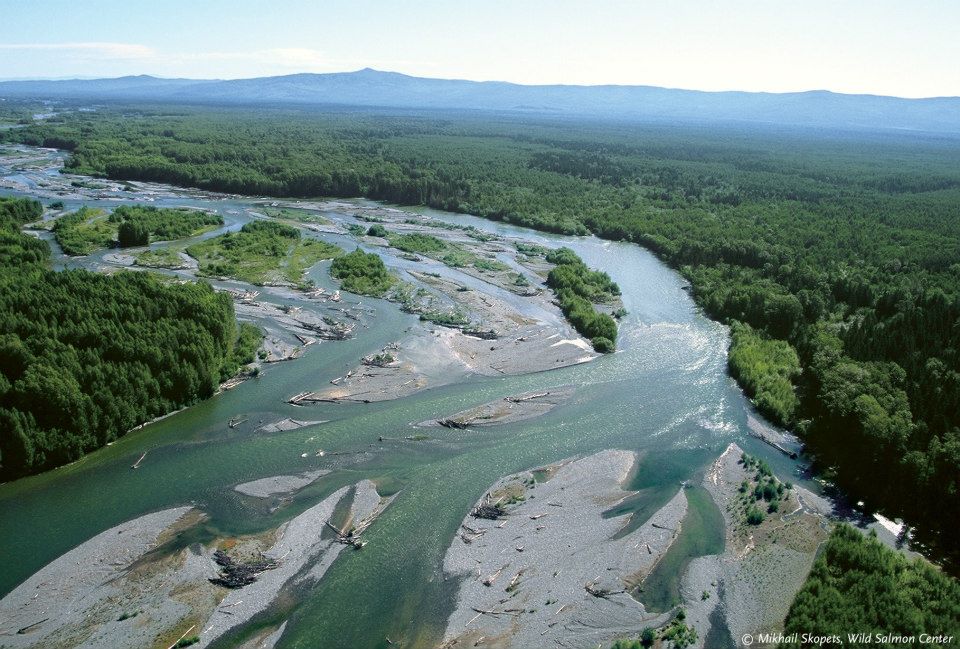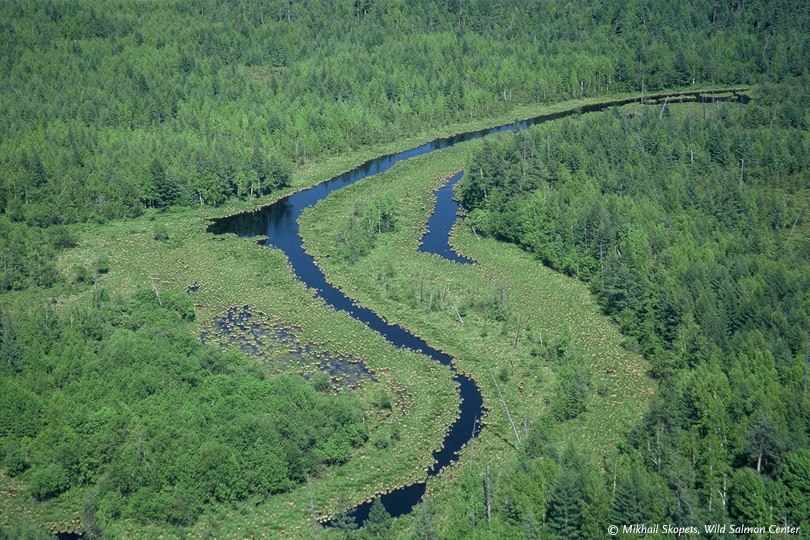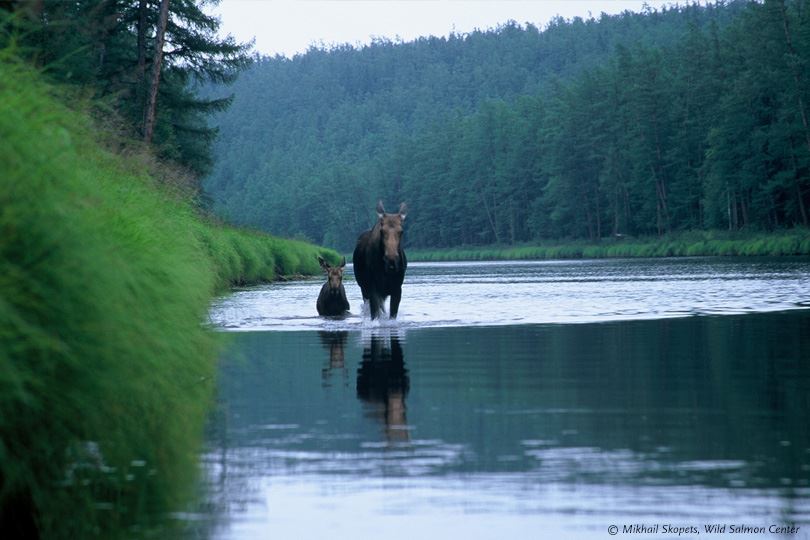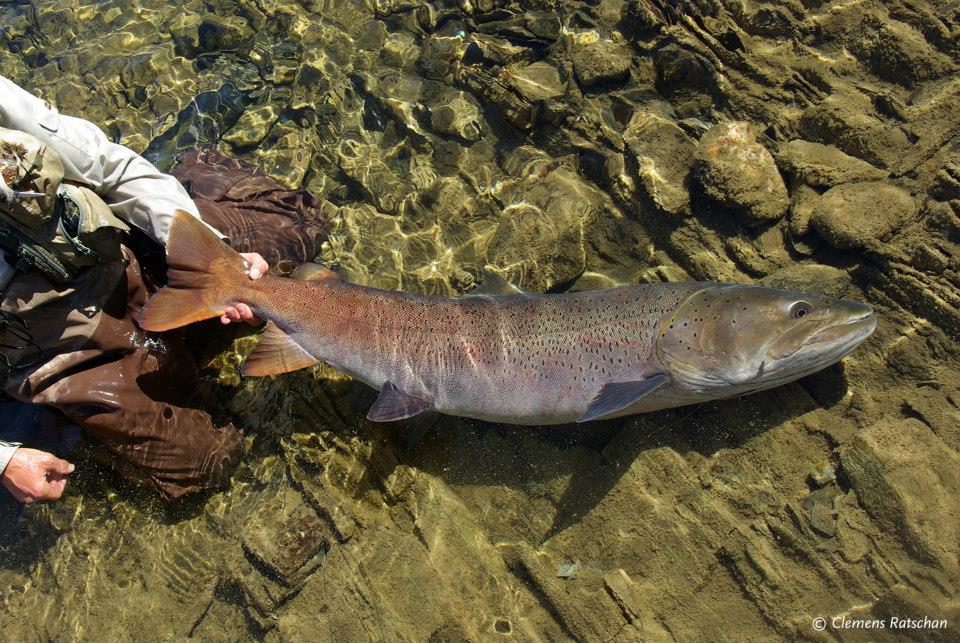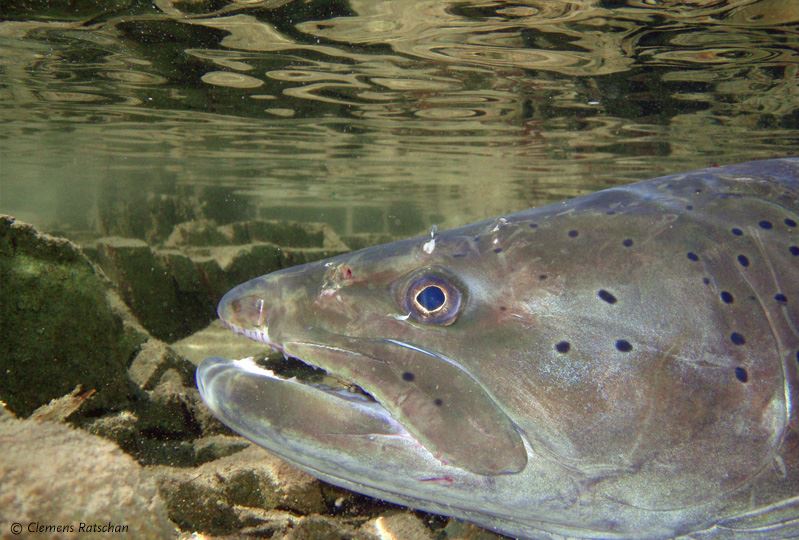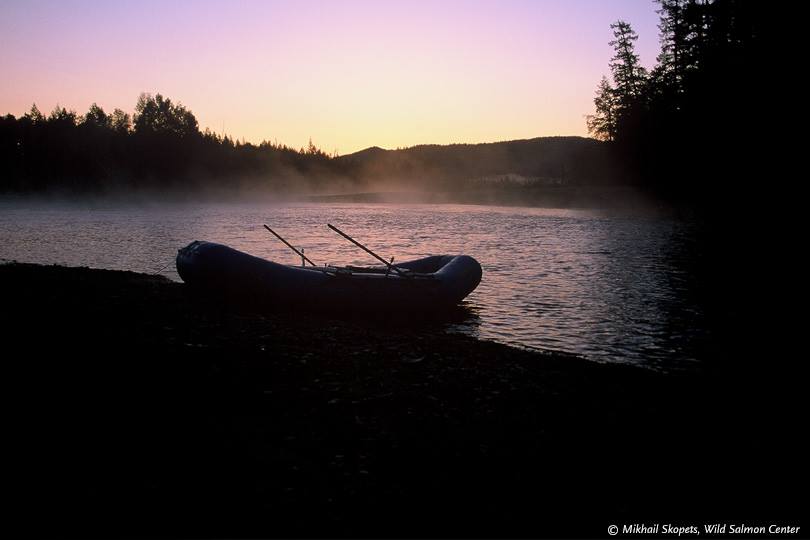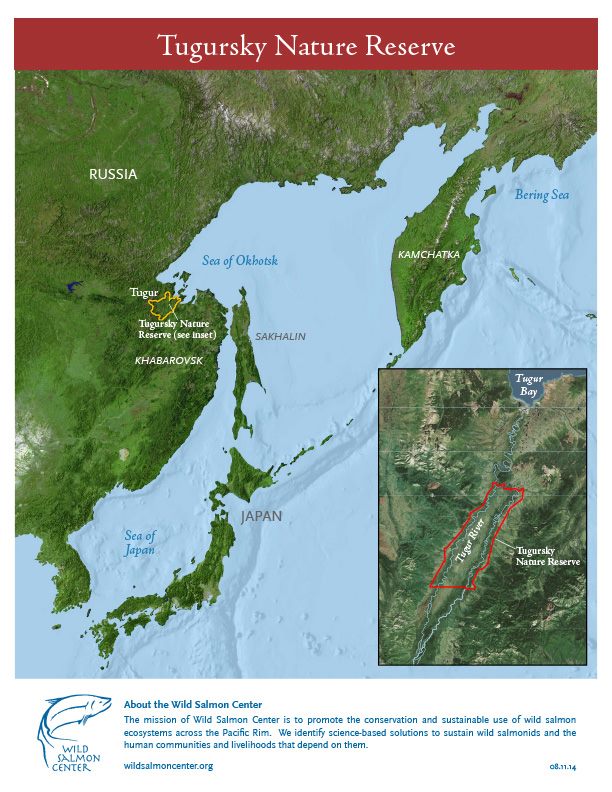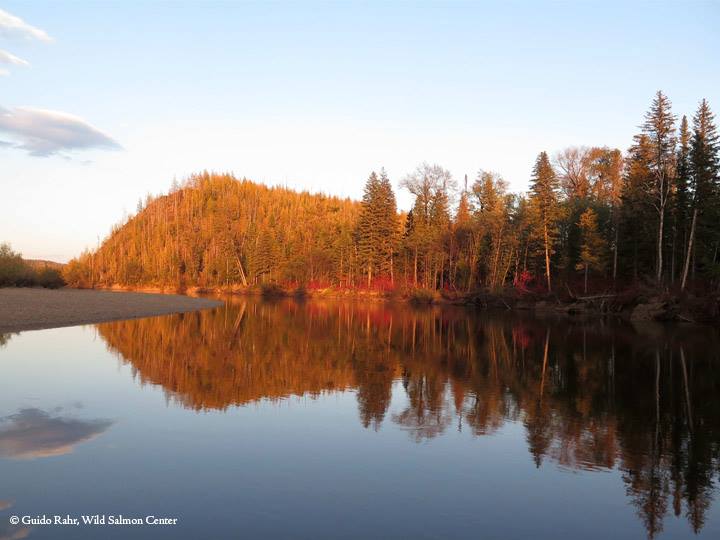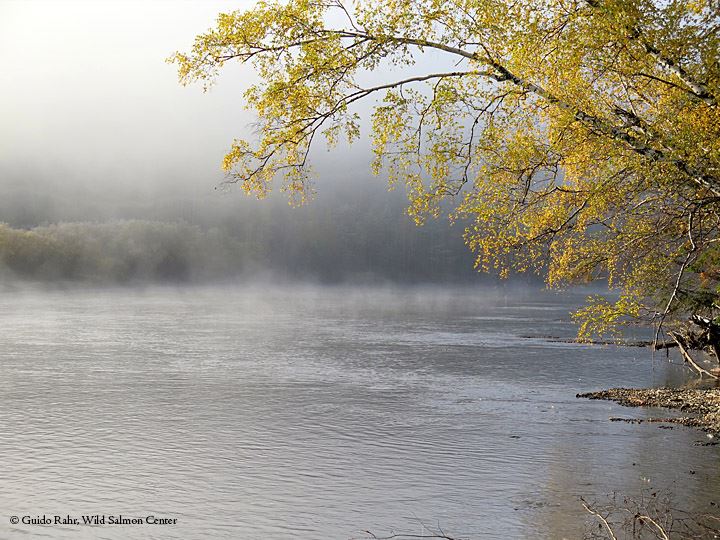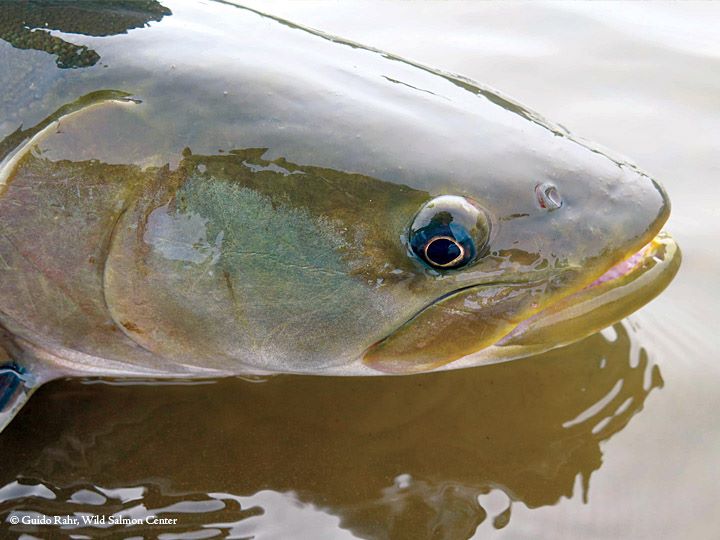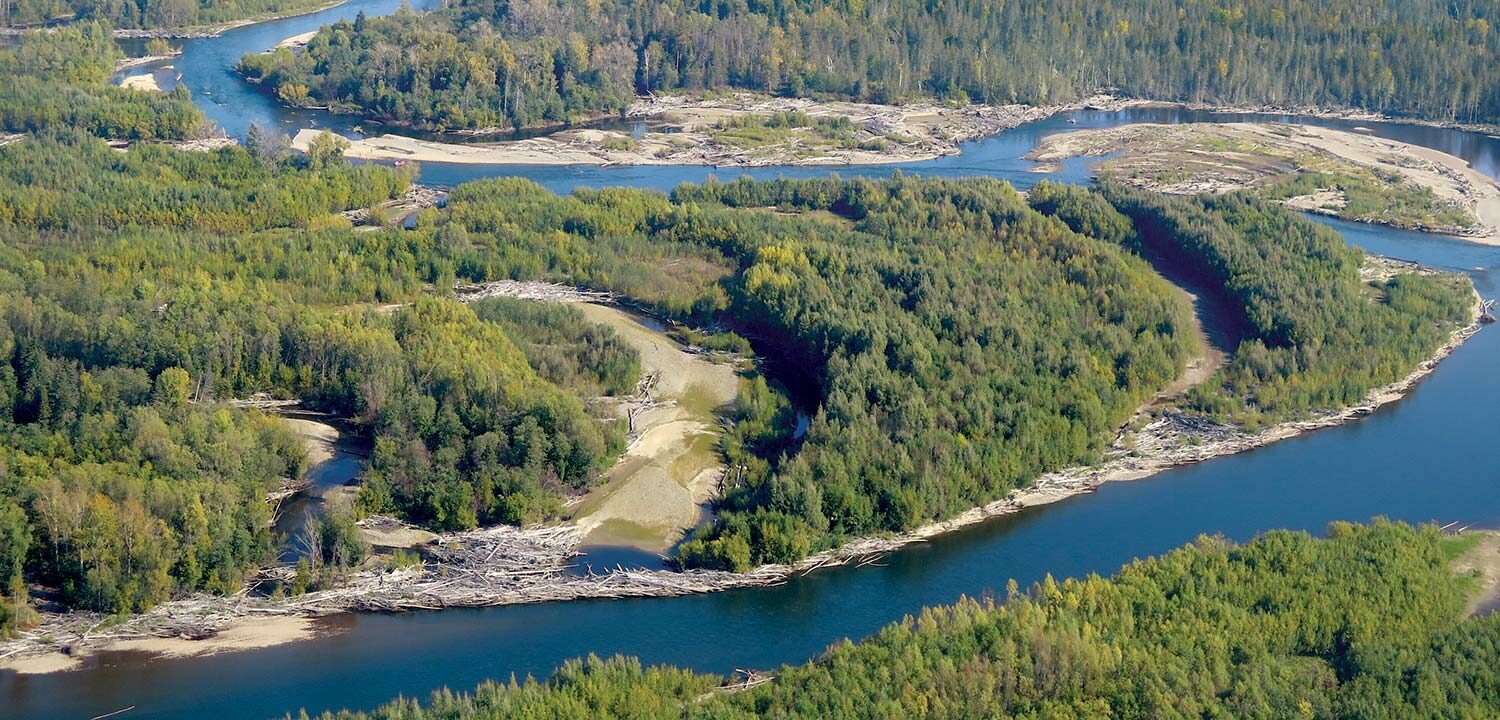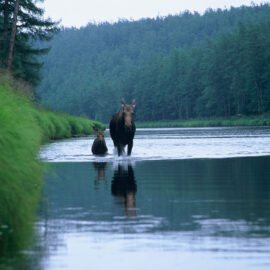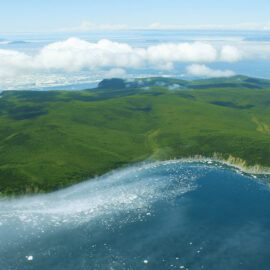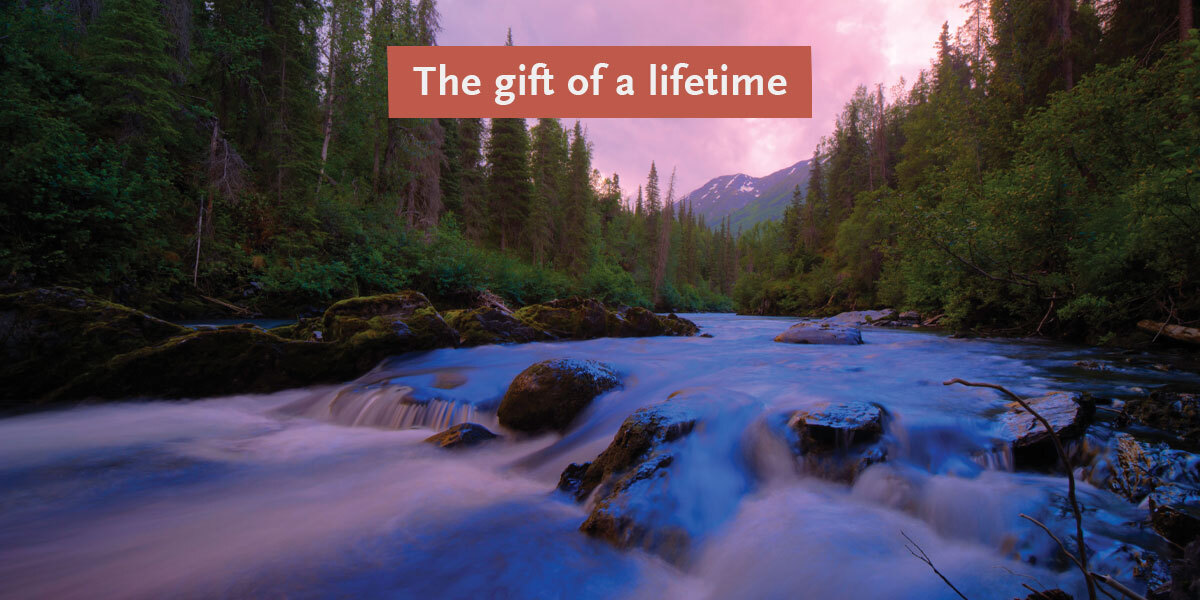Nearly 200,000 acres part of new Tugursky Reserve, a home for giant taimen and 20 other species of fish.
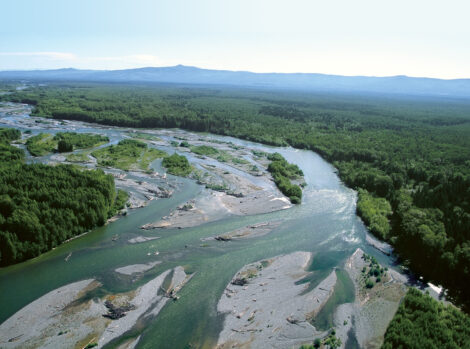
The Wild Salmon Center, Khabarovsk Wildlife Foundation, and other partners have succeeded in winning the approval of the Tugursky Nature Reserve, which will protect 197,000 acres of critical habitat within the Tugur watershed in the Russian Far East’s Khabarovsk Region. A regional decree was signed by the Governor of Khabarovsk to establish the Reserve.
The Tugur River flows through the Tuguro-Chumikanskiy region of Khabarovskyi Krai (territory) and into the Sea of Okhotsk. The Tugursky Nature Reserve will safeguard key habitat for over 20 species of fish including chum and pink salmon and the threatened Siberian taimen as well as brown bears, foxes, Blakiston’s fish owl, osprey, Steller’s sea lions and white-tailed eagles.
“This achievement would not be possible without the understanding and support of the local communities, including the Evenki indigenous people, the scientific community who helped develop justifications for this protected area, and the Wild Salmon Center and their long-standing commitment to salmon conservation,” said Alexander Kulikov of the Khabarovsk Wildlife Foundation.
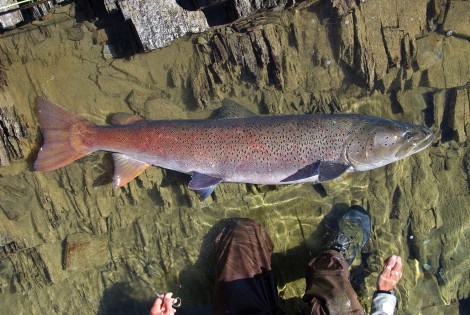
The Tugur is a global stronghold for Siberian taimen (Hucho taimen), which are a member of the trout and salmon family found in Russia and Asia. Siberian taimen are the biggest of the taimen family with the largest recorded specimen weighing 231 pounds and measuring nearly seven feet.
Tugur taimen can reach lengths of over six feet and weigh up to 170 pounds and are in a special category because they are one of only a few taimen populations that feed on adult Pacific salmon. The creation of the Reserve will also help protect strong salmon runs: the river currently supports a productive commercial fishery including a 170 metric ton chum salmon catch.
In 2012 Siberian taimen were assessed range-wide as Vulnerable on the International Union for the Conservation of Nature’s (IUCN) Red List. The assessors concluded that the creation of freshwater protected areas was the most urgent conservation action needed to recover the species. Over the years WSC has been serving an important role in supporting taimen conservation and assessment work, partnering closely with IUCN.
“Creation of the Tugursky Reserve is an example of successful cooperation between NGOs, government agencies, and municipalities of the Khabarovsk Region,” said Mariusz Wroblewski, WSC’s Western Pacific Program Director. “This accomplishment would not be possible without the long-term commitment of some of our most dedicated supporters, including the Turner Foundation and the US Forest Service’s International Program.”
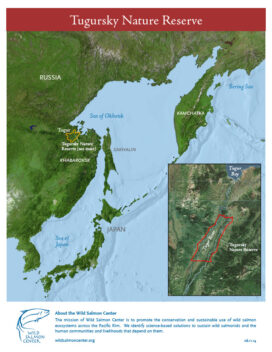
The Tugur is also a sport fishing destination. The establishment of this new protected area will provide an opportunity to demonstrate new low-impact angling techniques, including the use of single, barbless hooks.
“I couldn’t think of a better place to create a protected area to safeguard this species,” said ecologist and National Geographic Explorer Zeb Hogan. “There is virtually no human footprint there, offering the rare opportunity to effectively control habitat and fishery impacts that are pervasive throughout this region.”
The Wild Salmon Center has been working with partners to conserve key salmon ecosystems in the Russian Far East since the 1990s. In that time WSC has helped establish four protected areas in addition to the Tugursky Nature Reserve, including the Vostochny Refuge on Sakhalin Island, the Kol River Salmon Refuge on the Kamchatka Peninsula, and the Koppi River Nature Preserve and Shantar Islands National Park in Khabarovsk. Together they represent over two million acres of protected wild salmon ecosystems in key geographies throughout the Russian Far East.
View slideshow below, or check out our photo album on Facebook.
